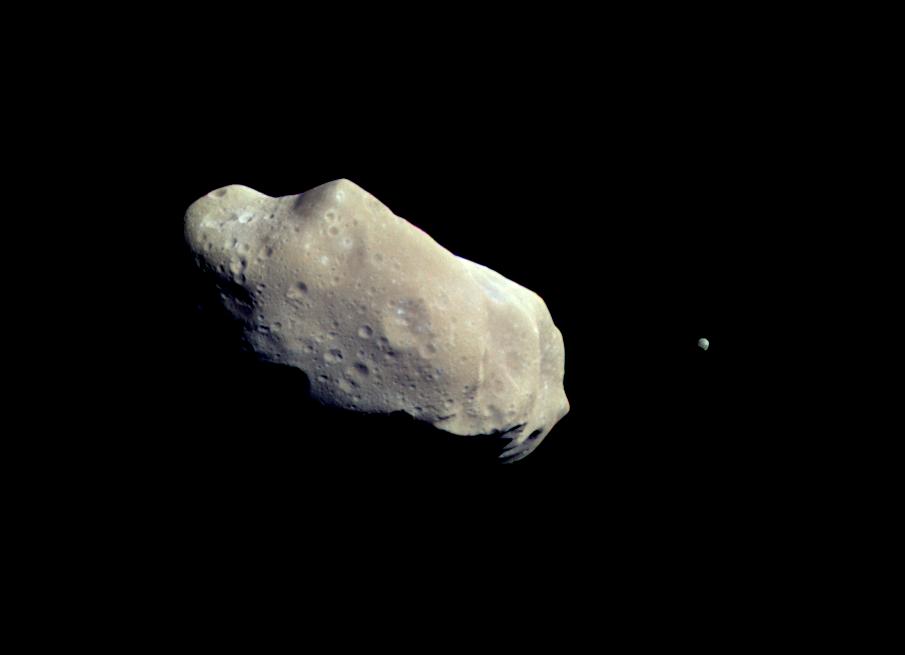Overview
Ida is the second asteroid visited by a spacecraft, and the first found to have its own moon. The moon was later named Dactyl.
On Aug. 28, 1993, NASA's Galileo spacecraft flew by Ida at a distance of about 1,500 miles (about 2,400 kilometers) en route to Jupiter. (The spacecraft flew by another asteroid, Gaspra, on Oct. 29, 1991.) A little more than five months later, scientists studying the images Galileo sent back to Earth noticed that a tiny moon accompanied the asteroid.
"It was previously thought that natural satellites of asteroids could form, but they probably weren't common," said Torrence Johnson, Galileo's project scientist. "Having found one fairly quickly, we can say that they're probably more common than previously thought."
Located in the main belt between Mars and Jupiter, Ida is one of the Koronis family of asteroids, which are thought to be the debris of an ancient collision between two larger objects. It is covered in craters and a deep layer of regolith (pulverized rock).
"Ida's age is baffling because the craters visible on its surface suggest that it is old, but being a part of the Koronis family suggests it is younger," Johnson said.
Ida is an S-type asteroid, composed mainly of silicate rock. This type of asteroid dominates the inner region of the asteroid belt, but comprises only about 17 percent of all known asteroids.
Discovery
243 Ida was discovered Sept. 29, 1884, by Austrian astronomer Johann Palisa at the Vienna Observatory. Its moon, Dactyl, was discovered on Feb. 17, 1994, by Ann Harch of the Galileo imaging team.
How Ida Got Its Name
Ida was named by Moriz von Kuffner, a Viennese brewer and amateur astronomer, after a nymph in Greek mythology who was entrusted to care for the infant Zeus together with her sister Adrasteia. The International Astronomical Union named Dactyl for mythological creatures that lived on Mt. Ida on the island of Crete.





